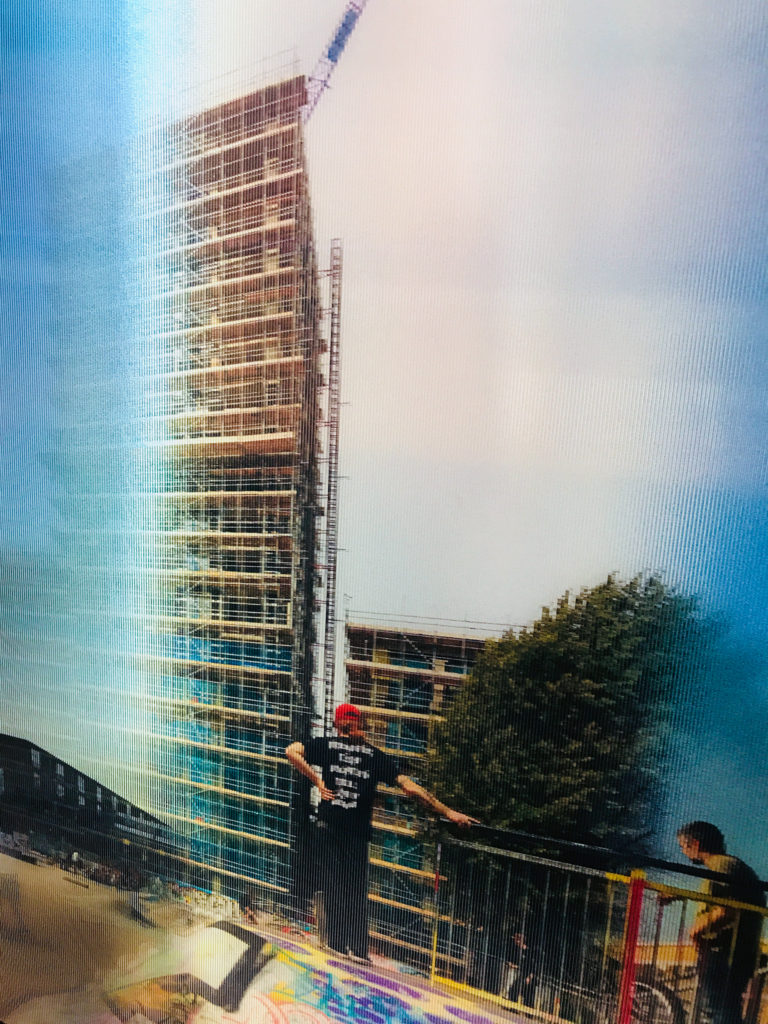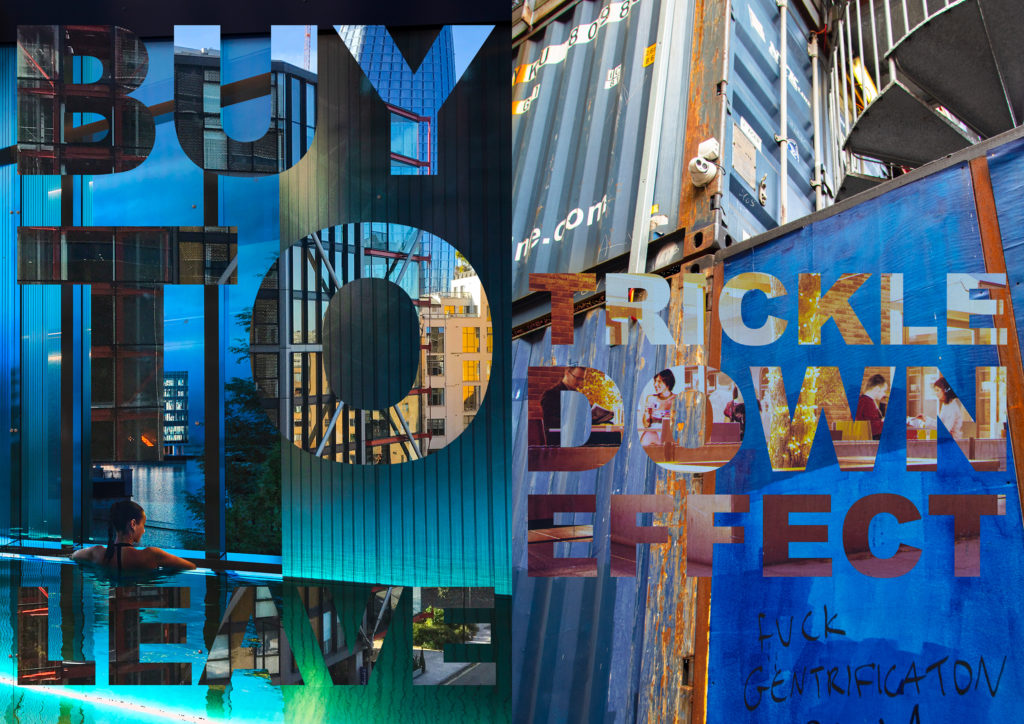
© Ellie Laycock - Stockwell IC1s
Shutter Hub member Ellie Laycock is an artist and photographer whose practice explores the urban environment and its impact on its residents, ideas of power and control, politics and the passage of time. Her work often incorporates elements of historical research and, due to her original training as a fine art sculptor, sometimes 3D objects. She is currently artist in residence at Lambeth Town Hall Art Programme, selected artist for the People and Places Commission (Arts Council England/ Lambeth/ Photofusion/ 3Space) and was a Shutter Hub 2020 bursary recipient.
It all started in 2015 with an eviction notice plopping onto my doormat. It wasn’t just me and my 4yr old that got that letter that day, all of my neighbours in the other 25 one, two and three-bedroom flats in the building also got one, over 100 residents in total. A Brixton property developer had bought the entire building and wanted it cleared of current tenants so that he could double the rents. No option to remain and pay double. I’d lived there for 6 years. My son had just started at a nursery nearby. We’d put down roots.
It wasn’t just our immediate local community in our building facing this either. This was also the time of the beginning of the Network Rail Arches evictions and the Guinness Estate evictions in Brixton. The tide of gentrification was crashing down on us all and we looked on helplessly, wondering what could happen next. Reclaim Brixton was formed, marches began, groups organised. But we couldn’t stop what was coming.
I started documenting my home. I shot the places that I knew were under threat and as I explored the streets, I noticed something really weird.
On the hoardings that were going up around the redevelopment sites, there were digital visions of the future. Visions inhabited by people who look nothing like the people who currently live here. For a start, nearly everyone in these visions was white.

© Ellie Laycock – Regeneration second to none – 2019
1500 days later, I decided to revisit the sites I had documented in Brixton in 2015 to see how much they had been impacted by gentrification. The changes were astounding.

© Ellie Laycock – Stockwell Skatepark 1500 Days Of Gentrification – 2015 and 2019
This work was exhibited in a solo show, ‘1500 Days Of Gentrification’, at Photofusion Pod, International House, Brixton in the summer of 2019. It was one of the first shows to be held at their new location of International House, having moved from Brixton Market after 30 years. During these 1500 days, the famous market had been bought up by a billionaire Texan DJ, who, predictably, hoiked the unit rents up. More evictions followed. Lenticular printing allowed a kind of time compression to fit the 1500 days into one image. You could see before and after, depending on where you stood in relation to the print. A slight movement of the head could erase or build tower blocks in a second. Like a frantic journey on H. G. Wells’ time machine.

© Ellie Laycock – Stockwell Skatepark, 1500 Days Of Gentrification (Lenticular Print) – 2015 and 2019
This project themes spin out into new strands of enquiry. In my series ‘Domestic Protests’, I create Poor Door doormats and sew Anti-Gentrification curtains to keep the developers at bay. A recent collaboration with Queen Mary University London saw this work being projected onto landmark buildings in Brixton including the Black Cultural Archives, Network Rail Arches and the iconic Bovril Wall.

© Ellie Laycock – Welcome to the poor door
My photographs of developers’ hoardings became part of my ongoing series ‘Signs Of Development’ that repurposes the advertising imagery found all over London.
Adverts for the many properties that are bought off-plan by overseas investors as safety deposit boxes rather than to be occupied as homes. This influx of global wealth combined with the commodification of home impacts and displaces our communities. The work also appropriates the language of the super-prime market and global capital flows, extracting key phrases from their marketing material. The work of writer Anna Minton is a great inspiration.
“Signs’ was first shown at the Photofusion Salon before the pandemic where it received an honourable mention from architectural photographer and award judge Adam Wiseman.

© Ellie Laycock – ‘Buy To Leave’ and ‘Trickle Down Effect’
Selected works from ‘Signs Of Development’ are currently (2020-2021) on show in various locations around Europe as part of the ‘Postcards From Great Britain’ exhibition series by Shutter Hub.
I am always looking for new opportunities to show this work. Preferably on a billboard opposite a luxury development.
You can currently see some of Ellie’s work in the Spectemur Agendo exhibition, part of the Lambeth Townhall Art Programme and the result of a commission and residency supported by Photofusion, 3Space, Arts Council England and Lambeth Council.
To find out more about Ellie’s work, visit her website here and follow her on Twitter or Instagram.
Join our mailing list for lots of good photography things direct to your inbox – our newsletters, calls for entry, updates on our work, and invitations to events and exhibitions.
Not a Shutter Hub member yet? Join here for opportunities to promote your work online and in exhibitions, access selected opportunities, events, seminars and workshops, meet up and share photographic experiences, and become part of our growing community…


